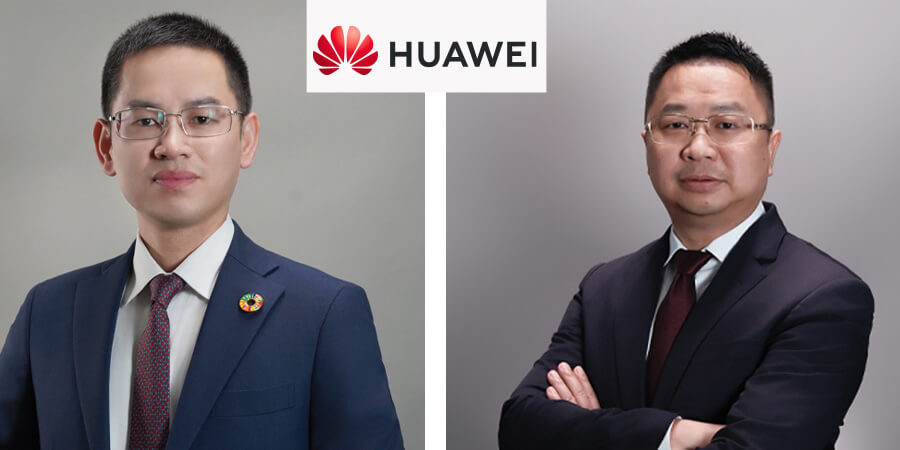By Allen Tang, President of ICT Marketing & Solution, Huawei ME & Central Asia
The telecommunications industry is rapidly evolving to meet the demands of the digital economy. Traditionally, telco businesses have focused primarily on providing connectivity services to both consumers and enterprises. As these consumers and enterprises evolve, the demand for enhanced experiences and digital services so too increases. To seize these opportunities and play more prominent roles in the digital economy, many operators have transformed into techcos—technology-driven companies that deliver innovative services fueled by artificial intelligence (AI), 5GA, and cloud platforms.
To better support operators in their transformation journey, Huawei unveiled Techco 1.0 at the 2024 GITEX GLOBAL event. This strategic initiative aims to accelerate telecom operators' transformation across the Middle East and Central Asia.
Techco 1.0 is designed to reshape the telecom landscape, enabling carriers to navigate the challenges posed by a digital future and capitalize on growth opportunities. The initiative focuses on three core pillars: business servitization, service platformization, and platform intelligization. Each pillar addresses specific challenges within the telecom sector, providing operators with the tools needed to transition smoothly from traditional telecom models to advanced techco models.
Also Read: Huawei: Bridging 5G Excellence and 5.5G Leadership in the AI Era
Business Servitization, Service Platformization, and Platform Intelligization
The concept of business servitization enables telecom operators to move beyond product-based offerings and embrace service-oriented models. With the advent of Techco 1.0, carriers can monetize products and solutions tailored to different markets, including consumers (2C), households (2H), and businesses (2B). This shift involves offering a range of digital services, such as Fiber-to-the-Room (FTTR) and smart home solutions for 2C and 2H markets, managed service provider (MSP) solutions for small and medium enterprises (SMEs), and Artificial Intelligence Contact Center (AICC) systems for efficient customer experience management. Additionally, Techco 1.0 equips carriers to explore “super app” ecosystems.
Service platformization within Techco 1.0 focuses on creating an ecosystem that drives value through data monetization, operational improvements, and cross-industry collaboration. The initiative encourages telecom operators to collaborate with industry partners to enhance their service portfolio, blending connectivity with value-added digital services.
One of the cornerstones of Techco 1.0 is platform intelligization. By harnessing the power of AI and multi-cloud infrastructure, operators can automate their operations, personalize services, and scale their computing resources. AI-driven automation and insights optimize network performance, enabling carriers to improve service reliability, predict and resolve issues in real-time, and cut operational costs. It also enables telecom operators to better serve emerging demands for 5G-A, IoT, and other advanced technologies, further positioning them as essential players in the digital economy.
Techco 1.0 Framework Benefits
The shift from traditional telecom operations to a techco model is driven by several industry trends and challenges. Key trends driving the need for transformation include:
- Shift from Products to Services: With digital consumption growing, telecom operators are transitioning from traditional product-focused models to more diversified, service-based offerings.
- Operational Complexity and Efficiency: Telecom carriers must manage the complexities of modernizing legacy systems while delivering faster, more reliable services.
- Emerging Technologies: As 5G-A, AI, and IoT technologies become more mainstream, telecom operators must quickly adapt to remain competitive and capture new market opportunities.
- Workforce Transformation: Digital transformation requires new skill sets and talent, prompting telecom companies to invest in a workforce adept at managing digital services and data-driven operations.
Moreover, the Techco 1.0 initiative empowers operators to modernize their business processes and infrastructure in several key areas:
- Efficient Service Design, Deployment, and Delivery: By adopting a service-oriented model, operators can design, deploy, and deliver digital services more quickly. This reduces the time-to-market (TTM) for new offerings, allowing carriers to respond to customer needs more effectively.
- Enhanced Customer Engagement and Personalization: AI-driven insights from Techco 1.0 allow carriers to engage with customers on a more personal level, delivering relevant and timely services.
- Seamless Integration with Existing Infrastructure: The Techco 1.0 framework supports a gradual transition from legacy systems, enabling operators to add layers of intelligence and agility without disrupting existing operations. This integration promotes continuity while allowing carriers to experiment with new, AI-powered solutions.
- Cost Reduction through AI-Driven Efficiency: The adoption of AI across network management, predictive maintenance, and customer interactions reduces operational costs, freeing up resources for investment in growth-oriented services.
Also Read: Huawei Launches 5G-AA Solutions for the Mobile AI Era
Overcoming B2B Market Challenges with Techco 1.0
In the B2B market, telecom operators face unique challenges, including complex customer needs, intense competition, and the demand for high-quality, reliable connectivity. Techco 1.0 addresses these challenges through its focus on agility, scalability, and intelligent service delivery.
Business servitization enables operators to offer on-demand resources that are scalable and flexible, which is especially valuable for enterprise clients with fluctuating needs. This agility supports faster service deployment and adaptation to market changes. Service platformization allows operators to build infrastructure that supports efficient data management and seamless integration across systems. This not only improves operational efficiency but also facilitates customized solutions for B2B clients. By leveraging AI for network and service management, operators can improve customer experience through faster issue resolution, proactive service enhancements, and personalized offerings. For B2B clients, this means better connectivity, reliability, and responsiveness.
Conclusion: A Vision for the Future of Telecommunications
Huawei’s Techco 1.0 represents a pivotal moment for the telecom industry, as it empowers operators to navigate the complexities of digital transformation and capitalize on emerging opportunities. By embracing AI, 5G-A, and cloud technologies, carriers can transition from traditional service providers to innovative techcos. This transformation not only supports operational efficiency but also enables telecom operators to capture new revenue streams and play a more prominent role in the digital economy.
Through servitization, platformization, and intelligization, Techco 1.0 offers a strategic path for telecom carriers to thrive in an increasingly connected world, setting the stage for a resilient, tech-driven future in telecommunications.
Also Read: HDC·2024 HUAWEI MEA: Reaching New Heights in Digital Transformation
5G-A Era: FWA Business Innovation Unleashes Commercial Potential
By Alex Xu, President of Carrier Business, Huawei Middle East & Central Asia
The advent of the 5G-A era has injected new vitality into the development of FWA services. The rapid progress in the Middle East and continuous innovation from Huawei will undoubtedly push this field to higher levels. With ongoing technological advancements and deepening applications, FWA will continue to demonstrate its enormous commercial potential and social value globally.
More than 164 operators worldwide have launched 5G Fixed Wireless Access (FWA) services. In the GCC region, 5G FWA business is flourishing, with the total number of FWA users among GCC operators exceeding three million lines to date. Additionally, several operators have launched 5G FWA leased lines for small and medium-sized enterprises (SMEs).
Also Read: Huawei Introduces AI-Driven F5.5G All-Optical Network
5G-A Commercial Progress in the Middle East
The year 2024 marks the official inception of the commercial deployment of 5G-A in the Middle East. Multiple operators in the GCC have adopted 5G-A as part of their corporate strategy and signed Memoranda of Understanding (MoUs) for strategic cooperation with Huawei during Mobile World Congress 2024 (MWC 2024). Together with Huawei, operators are actively engaging in the innovation and commercialization of 5G-A. This year, Huawei has assisted operators in achieving 10 Gbps peak verification through millimeter wave (mmWave) and U6G technologies. Additionally, new technologies such as RedCap and P-IoT have been tested and implemented in the field of IoT, reinforcing operators’ confidence in developing 5G-A.
Notably, CPEs now support TDD 3CC, enabling enhanced connectivity and performance. Additionally, smartphones supporting TDD 3CC are expected to be available by the end of the year, broadening the accessibility of 5G-A technologies for consumers and industries alike. The introduction of these devices will further enhance the user experience and application scenarios of 5G-A networks.
FWA (Fixed Wireless Access), as a wireless fixed broadband access method, has become a key business for operators to rapidly capture the home broadband market, with the support of 5G-A technology, which offers low cost, fast deployment, and high speed. In countries like the UAE and Saudi Arabia, operators who have already launched fiber optic services are now scaling up their FWA business, developing it in tandem with fiber services. This approach has not only increased their overall share of the home broadband market but also generated significant revenue.
Countries such as Saudi Arabia, Qatar, and Kuwait have already allocated new spectrum to operators. Meanwhile, operators in the UAE, Saudi Arabia, and Qatar have begun large-scale deployments of 5G-A commercial networks. This rapid deployment not only demonstrates the high regard Middle Eastern operators have for 5G-A technology but also provides a solid foundation for the development of FWA services.
Leaps and Bounds in Connectivity Capability
The 5G-A network, through TDD multi-carrier aggregation technology, provides operators with downlink capabilities of 10 Gbps. This technological innovation allows operators to offer high-speed service packages. For instance, in Saudi Arabia, operators have upgraded their traditional 100 Mbps rates to guaranteed 300 Mbps, enhancing user experience and attracting more high-end users.
Through 5QI assurance and SUL (uplink supplementary) technology, 5G-A significantly reduces and guarantees uninterrupted latency for latency-sensitive services such as autonomous driving and online gaming, solving the uplink transmission bottleneck for small and medium enterprises (SMEs), providing stable, dedicated access.
RedCap technology has matured, enabling a broader range of IoT modules and devices to enter commercial markets. This advancement significantly lowers costs for terminals, making IoT solutions more accessible and expanding their potential applications across industries.
Huawei’s Contribution and Innovation
As a global leader in communication technology, Huawei has played a pivotal role in promoting the commercial deployment of 5G-A:
- Industry Advancement: Collaborating with regulators and operators to drive the evolution of global 5G-A protocol standards, Huawei has facilitated the allocation of the IMT wireless identifier for the U6 GHz spectrum by introducing terminal manufacturers to regions and countries, adapting terminal 5G-A key technologies, and enabling the commercial capability of 5G-A across TDD 3CC, millimeter wave CPE, and mobile terminals.
- Business Incubation: In partnership with operators, Huawei established 5G-A Business Innovation Centers to explore monetization pathways for 5G-A. Through the launch of FWA², operators have capitalized on new business opportunities such as premium FWA speed, gaming latency monetization, high-speed leased line, and new applications in automotive OBD.
- Technological Innovation: Huawei introduced the industry’s first TDD dual-band 64T MetaAAU, which integrates multiple frequencies to save antenna space and reduce power consumption, enabling the easy deployment of 5G-A. Use of this technology has already commenced in the Middle East. The innovative FDD Sub1G 16T Massive MIMO offers 5 times the capacity and user experience, with over 10 dB improved coverage. Huawei’s pioneering indoor LampSite X supports full sub6G spectrum integration and TDD 3CC and has been widely deployed in the Middle East. The innovative Ambient site digitizes base stations, antennas, and energy, providing multi-dimensional management and adjustment for network intelligence.
Huawei will continue to collaborate with regulators and operators to accelerate the commercial development of 5G-A, exploring the vast business opportunities and social value of FWA.









